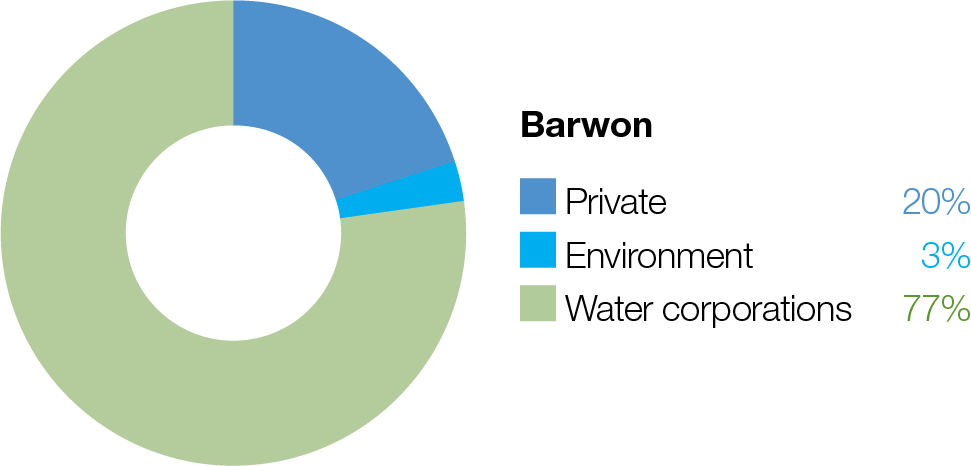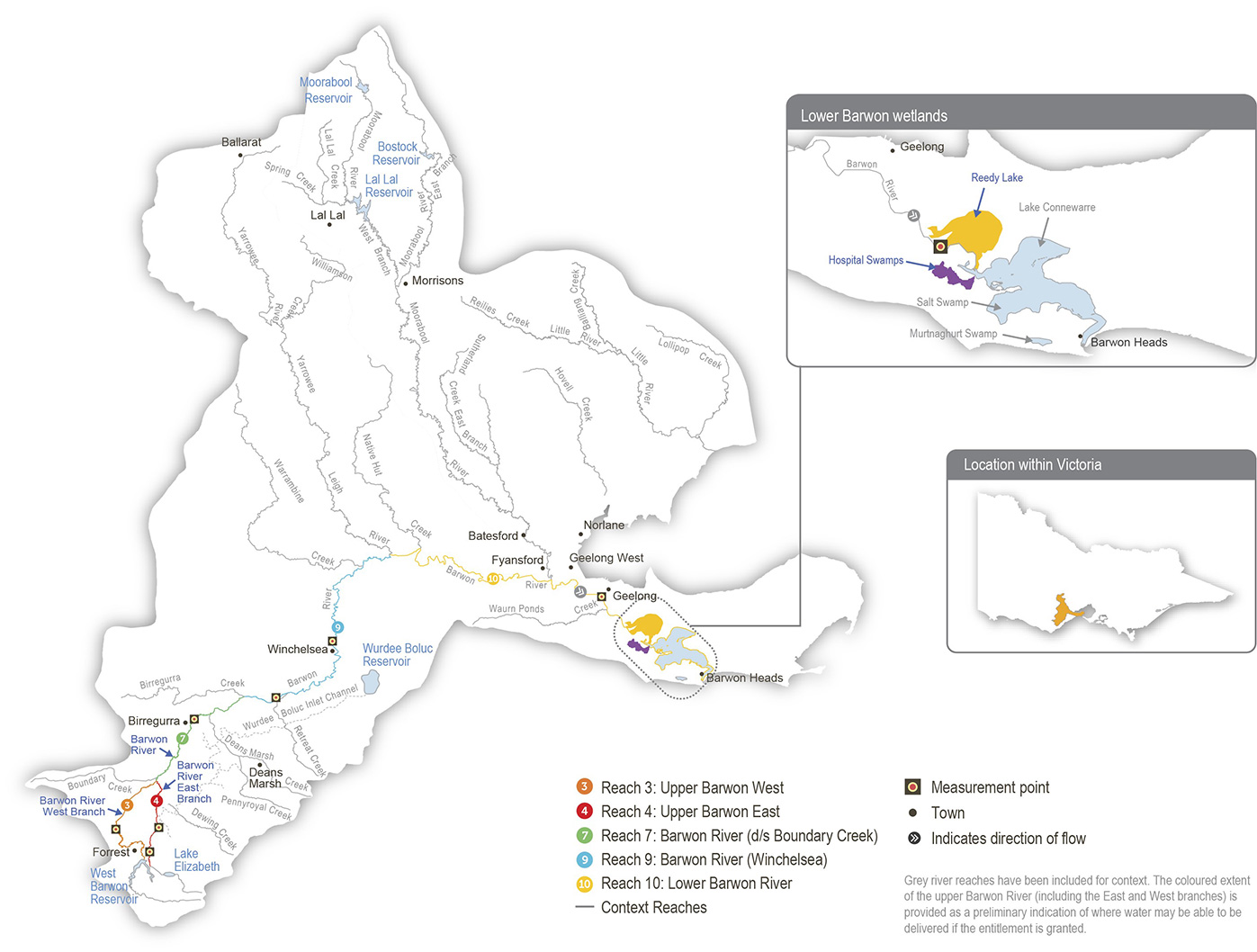Traditional Owner cultural values and uses
The reaches of the Barwon River that can be most influenced by water delivered from the West Barwon Reservoir sit on Eastern Maar Country.
In February 2020, the Eastern Maar Aboriginal Corporation (EMAC) received Registered Aboriginal Party (RAP) status under the Victorian Aboriginal Heritage Act 2006 over a large portion of land in south-west Victoria, including the Barwon River upstream of Winchelsea. In 2023 Eastern Maar gained formal recognition of their rights under the Commonwealth Native Title Act 1993 for over half of the RAP area, adding to initial recognition in 2011 under the Native Title Act, though further areas remain in negotiation. Native Title determination acknowledges Eastern Maar’s ongoing connection and intrinsic relationship to Country across south-west Victoria, including parts of the Barwon River catchment.
Eastern Maar obligations to Country and objectives for Country are described in the Eastern Maar Country Plan Meerreengeeye Ngakeepoorryeeyt. Eastern Maar assertions for parreeyt (water) are further documented in Eastern Maar’s Nation Statement (Water is Life: Traditional Owner Access to Water Roadmap 2022).
In early 2023, a meeting was held between the Corangamite CMA and EMAC to discuss proposed 2023-24 environmental flows in the upper Barwon River. EMAC also reviewed and provided feedback about the Corangamite CMA’s upper Barwon seasonal watering proposal, which outlined proposed environmental flows for the year ahead.
The Corangamite CMA is also working with Wadawurrung Traditional Owners Aboriginal Corporation (WTOAC) to understand opportunities to provide for cultural values and uses and other aspirations for the management of water for the environment in the Barwon River downstream of Winchelsea, on Country where WTOAC holds Registered Aboriginal Party status. In early 2023, the Corangamite CMA met with WTOAC to discuss environmental flows management in the Barwon River.
EMAC and WTOAC have formal plans for how to heal Country in the region, and the Corangamite CMA continues to work with them to identify their cultural objectives and associated values and uses that align with environmental flows.
Social, recreational and economic values and uses
In planning the potential environmental watering actions in Table 3.7.1, the Corangamite CMA considered how environmental flows could support values and uses, including:
- water-based recreation (such as canoeing, kayaking, swimming and fishing, particularly for river blackfish)
- riverside recreation and amenity (such as birdwatching, camping and walking)
- socioeconomic benefits (such as for diverters for stock needs and domestic use: water levels and water quality can rely on the delivery of water for the environment, particularly in summer).

